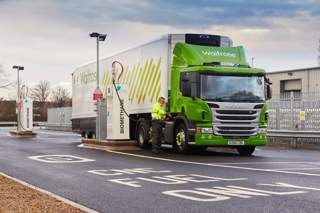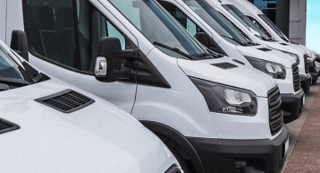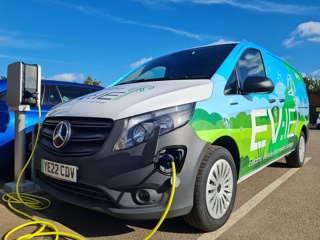Cenex has announced the results of its review of the Environment Agency’s (EA) Light Commercial Vehicle (LCV) fleet.
Cenex used its vehicle simulation package to assess the potential environmental and cost performance of a variety of low carbon technologies and fuels within their fleet operation. The results of the analysis have justified the decision for EA to use hybrid vehicles and biodiesel going forward and highlighted the potential for the deployment of small electric panel vans.
EA commissioned Cenex to provide advice on a range of low carbon vehicles and fuels that are available for use in its fleet. Cenex conducted the analysis in two phases to help EA better understand how the deployment of different low carbon technologies would impact on their operations. The first phase was a technology review where the performance of low carbon technologies was presented in a traffic light matrix. This highlighted through the use of colour and annotation, how vehicle and fuel operational practicability, total cost of ownership (TCO) and fleet environmental performance may differ from the current diesel fleet when new low carbon technologies are considered.
The second phase provided an accurate comparison of selected low carbon technologies, utilising the Cenex Fleet Carbon Reduction Tool (FCRT). The FCRT is a simulation tool that can calculate fuel usage, carbon dioxide emissions generated and cost of ownership incurred by the operation of a fleet of vehicles over representative driving cycles. The tool therefore yields quantitative information to feed into the decision making process for choosing low carbon technology options, which can reduce and/or eliminate the need for trialling some technology options in the field.
During phase one, the EA fleet was split into groups of similar types of vehicle, where each group was analysed against its compatibility with currently available low carbon technologies and fuels. This high level review included electric, hybrid, natural gas, biomethane and biodiesel vehicles; –and resulted in an estimation of the TCO and environmental performance of each option. The results of this technology review indicated that there were very limited options available for carbon reduction within the 4x4 and car derived van vehicle groups. However, the light commercial vehicle groups showed good potential for carbon and cost savings and so were taken forward for more detailed economic modelling and simulation work.
Phase two utilised the Cenex FCRT to present a more accurate assessment of the economic and carbon reduction potential of the selected alternative fuels and technologies when operated within the EA fleet. Vehicle performance was modelled over two bespoke drive cycles, representative of EA fleet operations, which resulted in an accurate assessment of the fuel use, CO2 emissions and TCO associated with each technology type.
As part of the analysis, Cenex highlighted those areas where alternative fuels and drivetrain technologies had a positive impact on both fleet TCO and well-to-wheel (WTW) carbon emissions. The two technologies identified as having a cash and carbon benefit were the purchase of small panel van EVs under a battery leasing model agreement and large panel van diesel hybrid vehicles. In other areas a judgement is required as to whether the additional cost is justified through emissions savings. In addition, the analysis carried out by Cenex highlighted the positive impact that continuing to operate on biodiesel had on the fleet TCO and WTW emissions.
“Gaining independent support and results verification by Cenex has given us the validation we were seeking to continue using hybrid vehicles and biodiesel within our fleet” says Ian Jutson, national fleet services manager, at the Environment Agency. “It has provided a useful insight into which EV vehicles would best fit our operational needs, and has confirmed our fleet strategy going forward. We look forward to continually improving the performance of our fleet over the next few years; in the confidence we have considered all our current options.”
“Clearly the task of reducing fleet emissions through alternative fuels and technologies is particularly challenging for the EA fleet given the high number of 4x4 vehicles, which are not supported by current low carbon options” says Robert Anderson, programme manager at Cenex.
“However, our analyses have indicated that increasing the use of diesel hybrids and biodiesel within their LCV fleet would improve their TCO and carbon emissions. Although the use of EVs was highlighted as an option, the EA need to undertake further work to identify the optimal duty cycles given the range and charging restrictions of these vehicles. We look forward to continuing to work together to provide any further infrastructure guidance and planning support EA might need” concludes Anderson.
An Executive Non-departmental Public Body responsible to the Secretary of State for Environment, Food and Rural Affairs, the Environment Agency’s principle aims are to protect and improve the environment, and to promote sustainable development. As a priority in its 2011 – 2015 Corporate Plan, the Environment Agency is to ‘act to reduce climate change and its consequences,’ which includes playing a role in helping to reduce greenhouse gas emissions.


















Login to comment
Comments
No comments have been made yet.